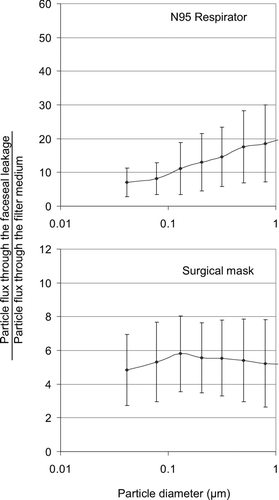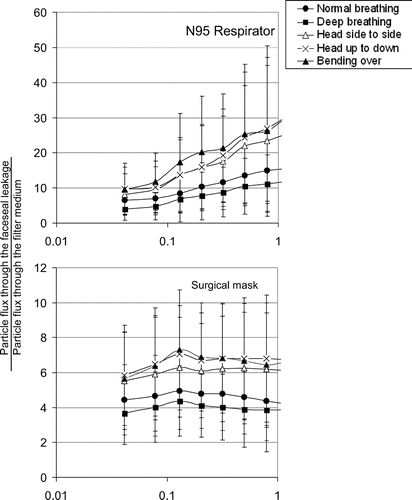Figures & data
FIGURE 1 (A) Experimental setup for testing respirators/masks donned on a human subject; (B) Experimental setup for testing respirators/masks on a manikin equipped with the Breathing Recording and Simulation System.
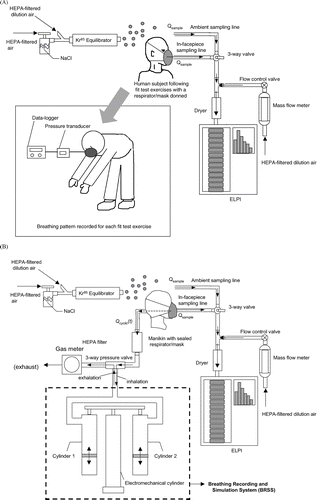
FIGURE 2 Mean inspiratory flow rates (QMIF) recorded with the Breathing Recording and Simulation System for each fit test exercise. Each bar represents the average value of MIF and the standard deviation integrated over 25 subjects of the NIOSH fit testing panel.
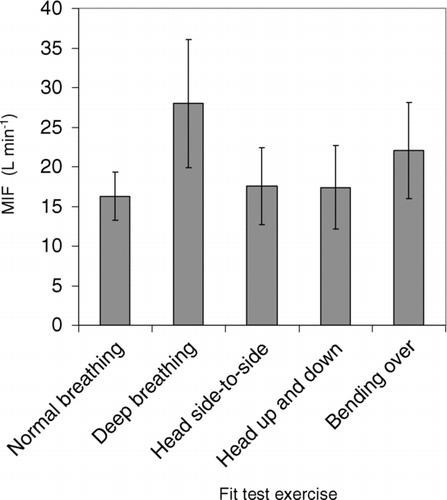
FIGURE 3 The exercise-specific breathing patterns recorded by the Breathing Recording and Simulation System from a selected subject exhibiting QMIF closest to the average values calculated for 25-subject panel: normal breathing (A), deep breathing (B), head side-to-side (C), head up and down (D), bending over (E).
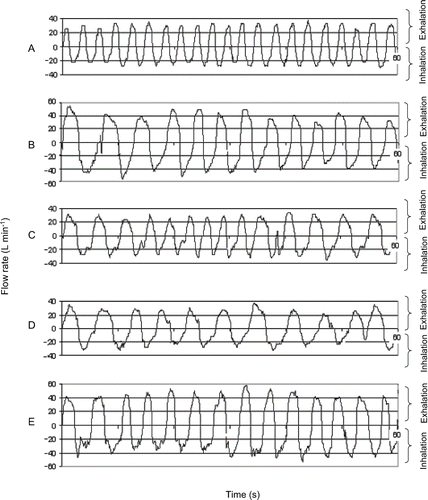
FIGURE 4 The panel-integrated particle penetration through the N95 facepiece respirator and the surgical mask as a function of particle size. Each point represents the average value and the standard deviation of 75 observations (25 subjects × 3 replicates).
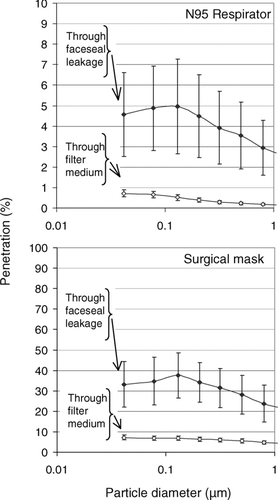
FIGURE 5 The panel-integrated FLTF ratio for the N95 facepiece respirator and the surgical mask. Each point represents the average value and the standard deviation of 75 observations (25 subjects × 3 replicates).
